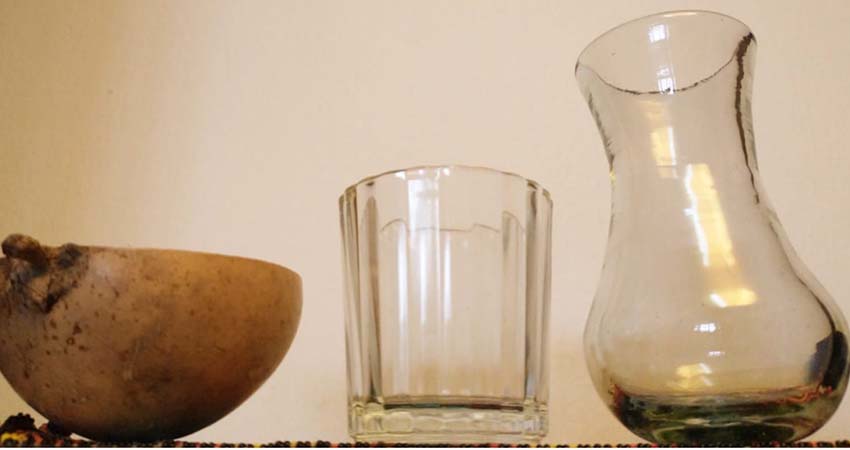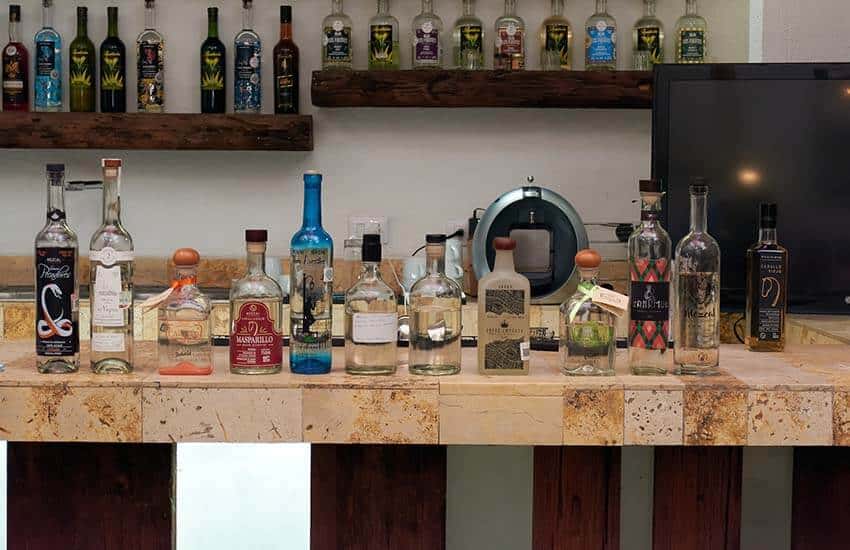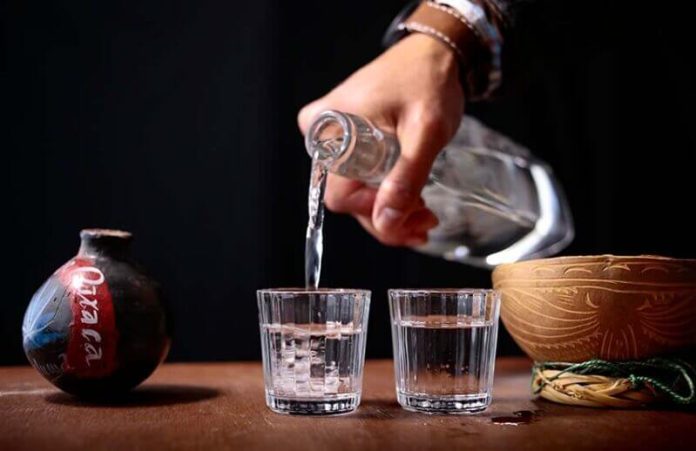Mezcal, one of Mexico’s most ancient libations, is a lesser-known alcoholic beverage gaining attention in recent years. If you’re not familiar with it, surely you know tequila, Mexico’s most potent traditional liquor, famous around the world. Well, tequila is actually a type of mezcal that evolved into its own particular category.
Tequila is rooted in the tradition of mezcal making, but mezcal has its own unique distillation process and a very specific way that it should be tasted. It was being produced in Mexico long before the arrival of the Spanish — at that time in clay pots, a process that some mezcal masters still use today.
With the arrival of the Spanish came the introduction of the alcohol still, particularly the “Filipino” still, which continues to be used today.
What is officially recognized as mezcal is made in various Mexican states, with a range of production methods and using different types of agave plant. Its regulation on a national scale is still evolving. There are currently nine states where mezcal is made and several others in the process of being certified.
Mezcal is obtained from the first, second or third distillation of cooked fermented agave hearts — called the piña. They can weigh anywhere between 50 and 300 kilograms, depending on the type of agave. The most common type in Mexico, the espadín, needs at least eight years to mature. Its hearts weigh up to 300 kilograms.

The process requires painstaking attention and starts with the plants’ cultivation. Most agaves grow wild and are not sprayed with pesticides, meaning that most artisanal mezcal can be considered organic even if it’s not certified as such.
Once mature, cutting the leaves, or pencas, away from the heart must be precise, or the mezcal’s quality can suffer. With artisanal production, the hearts are cooked in an earthen pit, which has an important effect on the mezcal’s overall expression once distilled.
The cooking time varies from mezcal master to mezcal master. During cooking, the sugars of the plant feed its natural yeasts, determining alcohol levels.
Once cooked, the agave hearts are cut into pieces, and their fibrous meat is shredded in the process. During the cutting, the separation of the fiber is very important and must be done by someone with experience in order to safeguard the agave’s juice and make sure that process is hygienic.
The fermentation that follows also requires lots of attention — the mezcal master must keep an eye on the temperature, sugar levels and any possible contaminants in the fermentation mash. All the knowledge and patience that goes into mezcal making is what makes its producers true masters of their craft.
The type of agave, the region of the country and the type of production all play a part in determining the quality of the final product. Unlike other distillates, each mezcal has the distinct signature of the person who produces it.

If you want to buy mezcal and don’t yet know much about it, always take note of the name of the master who made it, as well as the town and the region it came from. The type of agave should appear prominently on the label or else you might find that you are purchasing an underwhelming mezcal blend. Blending mezcal is incredibly complicated, and only a limited number of producers do it well.
The level of alcohol by volume is another factor in mezcal’s quality — a good mezcal is 43% or higher, according to the experts. You can test a bottle by shaking it or pouring it and seeing how many “pearls,” or bubbles, are formed. The longer the bubbles last before popping and the more medium-sized bubbles there are, the more likely that you have a good bottle.
However, this is only one visual clue and doesn’t absolutely guarantee that your mezcal is good. Master mezcal makers also traditionally test to see how many pearls their mezcal makes as it falls into a jicara, a hollowed-out gourd used for tasting, but these days, that visual test is always followed up by measuring with a hydrometer to check the density.
Mezcal production is divided into three moments: the punta, or the first liquid to come out of the still, which is generally discarded; the cuerpo, or body, which is the middle section of the distillation process and will be used for the second and possibly third distillations of the mezcal and the final part of the distillation, the cola (tail), which is very high in alcohol. The cola is often added to the body of the mezcal in order to raise its overall alcohol content at the end of the process. The blending of these different sections must be done carefully and requires extensive previous knowledge.
Mezcal’s quality is defined by its aromas — of the agave plant, herbs, earth, honey, floral scents, smokiness, citrus and others. The mouthfeel of the mezcal should be intense due to its high alcohol content but not aggressive, and the flavor of the agave plant should be present.
Which receptacle you use to taste your mezcal is also important.

In Mexico, there are a few traditional glasses from which to drink mezcal, such as the aforementioned jicara or a veladora — a small votive candle holder. But drinking from either, you will lose some of the mezcal’s aromas due to their wide mouths.
A sherry glass or champagne flute can help maintain the aromas of the mezcal better because the release of the alcohol is more controlled. In addition, these types of glasses allow you to pause for sipping and prevent you from swallowing it in a single gulp.
There is a glass made especially for mezcal called el bulbo espirituoso — similar to a sherry glass but minus a stem — which combines the best of all options: its skinny middle keeps the alcohol from evaporating quickly while its wide mouth allows you to smell the mezcal’s aromas slowly and makes drinking easy. Its wide bottom allows for the proper oxygenation of the liquid.
Just as in the making of mezcal, tasting it is a delicate and careful process. Glasses, temperature and pairings are all things taken into account when it’s sampled properly, even more so with the wide variety of mezcals and their various food pairings.
Just as tequila has its rituals and myths — salt and lime, for instance, which don’t necessarily add to its appreciation — the same is true with the classic orange slices often served with mezcal. It’s fine if your aim is just to enjoy the beverage while hanging out with friends and chatting, but if you want to truly savor this liquor, it should be done on its own.
Start out by simply sniffing the mezcal in the glass without moving the liquid. Do this several times. The aromas should be the pleasant ones mentioned above — nothing that smells of gasoline or ether.
The first sip should be rolled around the mouth to coat it and then swallowed. This is followed by a second sip, which is again rolled around the entire mouth, this time to catch the subtle flavors that appear on different parts of the tongue.
You must remember to drink lots of water alongside the mezcal and, as they say in Mexico, “kiss” the mezcal — in other words, take small, slow sips, pausing between each. This will make your experience special and start you on a path to tasting mezcal like a pro.
By tasting it this way, you can appreciate the differences between one mezcal and another, between different types of agave and between the regions they are from. It’s a skill available to anyone who is willing to learn. Try it out and see what happens.
Salud!
Sommelier Diana Serratos writes from Mexico City.
